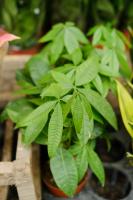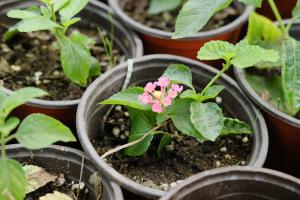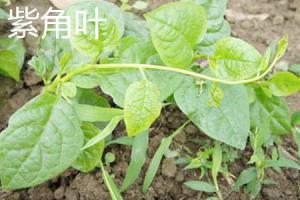What Direction Should Fig Tree Plants Face?
Fig trees are some of the most popular fruit trees in the world. Their sweet, juicy fruits are enjoyed by humans and animals alike, and they're also easy to care for. However, when it comes to planting fig trees, many people wonder what direction they should face in order to thrive. In this article, we'll explore the ideal direction for planting fig tree plants and why it matters.
South-Facing Direction
The general consensus among gardeners and experts is that fig trees should face south, if possible. This is because south-facing locations receive the most sunlight and heat compared to other directions. Fig trees need plenty of warmth and sun to grow and produce fruit. South-facing locations also tend to be protected from north winds, which can be too cold for fig trees to handle. Therefore, planting your fig tree facing south will give it the best chance of survival, growth, and fruit production.
East or West-Facing Direction
If you don't have a south-facing location available or if you live in an area with extreme heat or cold, a good alternative is to plant your fig tree facing east or west. Both directions provide plenty of sunlight and warmth, although not as much as a south-facing location. East-facing fig trees will receive strong morning sun, which can help them dry off any dew or moisture that has accumulated on their leaves overnight. West-facing fig trees will receive strong afternoon sun, which is important for photosynthesis and fruit ripening. Depending on your location, an east or west-facing fig tree may even receive a little bit of protection from north winds.
North-Facing Direction
The one direction you should avoid when planting fig tree plants is north-facing. North-facing locations receive the least amount of sunlight and heat, which are essential for fig tree growth and fruit production. Fig trees planted in north-facing locations may struggle to survive and produce fruit, or they may produce poor quality fruit that is smaller, less juicy, and less flavorful than figs grown in sunnier locations. Additionally, north-facing locations tend to be exposed to colder winds, which can damage the delicate leaves and branches of the fig tree.
Other Considerations
While the direction your fig tree faces is important, there are other factors to consider when planting and caring for your fig tree. The type of soil, drainage, and amount of water and nutrients your fig tree receives will also play a role in its growth and fruit production. Additionally, the type of fig tree you plant will determine its size and growth habit. Some fig trees are better suited for small gardens or containers, while others can grow to be large, spreading trees. Consulting with a local horticulturist or expert can help you determine the best location and care for your fig tree.
Conclusion
When it comes to planting fig tree plants, facing south is generally the best direction. However, east or west-facing locations can also work well, depending on your climate and location. North-facing locations should be avoided, as they receive the least amount of sunlight and heat, which are essential for fig tree growth and fruit production. By considering the direction of your fig tree and other factors, you can help support its growth, health, and delicious fruit production for years to come.

 how many times do yo...
how many times do yo... how many planted tre...
how many planted tre... how many pine trees ...
how many pine trees ... how many pecan trees...
how many pecan trees... how many plants comp...
how many plants comp... how many plants can ...
how many plants can ... how many plants and ...
how many plants and ... how many pepper plan...
how many pepper plan...






























